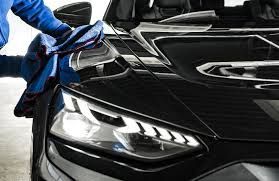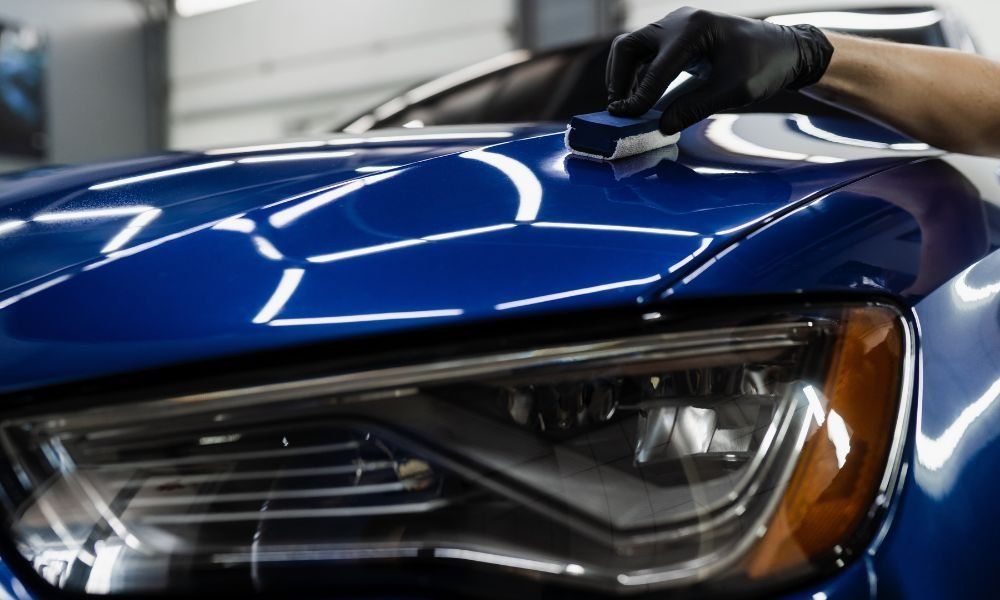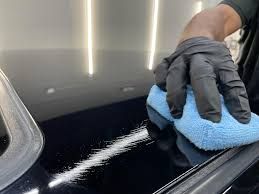Automotive ceramic coatings 101

Automotive Ceramic Coating 101: A Friendly Guide to Long-Lasting Shine and Durability
Owning a car is more than just a necessity; it's often a passion, an extension of one's personality, and a prized possession worthy of the best care. That's why automotive ceramic coating has become a must-have for car enthusiasts and vehicle owners alike, seeking that perfect blend of shine and protection. Not only does ceramic coating provide a dazzling finish that turns heads, but it also offers unparalleled car paint protection against the harsh elements. In this post, we'll explore how ceramic coatings work, their impressive durability, and why they're revolutionizing the way we think about vehicle maintenance. Whether you're a seasoned pro or just starting out on your car care journey, you'll find valuable insights to keep your ride looking showroom-ready.
Understanding Automotive Ceramic Coatings
Automotive ceramic coatings have revolutionized car care, offering superior protection and a lasting shine. Let's dive into what these coatings are, how they work, and the benefits they provide for your vehicle's paint.
What Are Ceramic Coatings?
Ceramic coatings are liquid polymer solutions that, when applied to a vehicle's exterior, create a permanent or semi-permanent bond with the factory paint. This bond forms a protective layer that's resistant to environmental contaminants and chemical etching.
Unlike traditional waxes or sealants, ceramic coatings offer a much longer-lasting protection. They're composed of nanoparticles that fill in the microscopic imperfections in your car's paint, creating an ultra-smooth surface.
The result is a hydrophobic coating that repels water, dirt, and other substances, making your car easier to clean and maintain over time. This advanced technology has become increasingly popular among car enthusiasts and everyday drivers alike.
How Ceramic Coatings Work
Ceramic coatings work by creating a chemical bond with your car's paint at a molecular level. This process, known as cross-linking, results in a durable, transparent layer that becomes an integral part of your vehicle's surface.
The nanoparticles in the coating fill in the tiny pores and imperfections in the paint, creating an incredibly smooth and even surface. This smoothness is what gives ceramic-coated cars their characteristic deep, glossy shine.
When water or contaminants come into contact with the coated surface, they're unable to penetrate or adhere to the paint. Instead, they bead up and roll off, taking dirt and grime with them. This self-cleaning effect is one of the key benefits of ceramic coatings.
Benefits of Car Paint Protection
Car paint protection through ceramic coatings offers numerous advantages over traditional methods. Here are some key benefits:
- Long-lasting protection: Ceramic coatings can last for years, unlike waxes that need frequent reapplication.
- Enhanced gloss: The smooth surface created by the coating enhances the paint's natural shine.
- Easier cleaning: Dirt and grime don't stick as easily, making washing your car a breeze.
Additionally, ceramic coatings provide excellent protection against UV rays, which can cause paint oxidation and fading over time. They also resist chemical stains and etching from acidic contaminants like bird droppings or tree sap.
Perhaps most importantly, ceramic coatings help preserve your car's resale value by keeping the paint in pristine condition for longer. This makes them a smart investment for any car owner.
Achieving Long-Lasting Shine
A ceramic coating isn't just about protection; it's about maintaining that showroom-fresh look for years to come. Let's explore how to apply these coatings and keep them performing at their best.
The Process of Applying Coatings
Applying a ceramic coating is a meticulous process that requires patience and attention to detail. Here's a simplified overview of the steps involved:
- Thorough cleaning: The car must be washed, decontaminated, and clay barred to remove all surface contaminants.
- Paint correction: Any swirl marks, scratches, or imperfections are polished out to ensure a perfect surface.
- Surface preparation: The paint is wiped down with a special solution to remove any oils or residues.
Next, the ceramic coating is carefully applied in small sections, typically using an applicator pad. The coating is then leveled and allowed to cure, which can take anywhere from a few hours to several days, depending on the product.
It's crucial to protect the vehicle from dust and moisture during this curing period to ensure optimal results. While DIY kits are available, many car owners opt for professional application to ensure the best outcome.
Tips for Maintaining Durability
To get the most out of your ceramic coating, proper maintenance is key. Here are some tips to ensure long-lasting protection:
- Regular washing: Use pH-neutral car shampoos and avoid harsh chemicals.
- Avoid automatic car washes: The brushes can potentially damage the coating.
- Dry properly: Use microfiber towels to prevent water spots.
It's also important to avoid parking under trees for extended periods, as sap and bird droppings can etch the coating if left too long. Regular maintenance washes every 2-3 weeks will keep your coating in top condition.
For best results, consider having your coating professionally inspected and maintained annually. This can help address any areas of wear and ensure your vehicle continues to look its best.
Common Misconceptions About Coatings
Despite their popularity, there are several misconceptions about ceramic coatings that can lead to unrealistic expectations. Let's clear up some common myths:
Myth: Ceramic coatings make your car bulletproof.
Reality: While they offer excellent protection, they don't prevent rock chips or deep scratches.
Myth: Once applied, you never need to wash your car again.
Reality: Regular washing is still necessary, but it becomes easier and less frequent.
Myth: All ceramic coatings are the same.
Reality: There's a wide range of quality and durability among different products and brands.
It's important to have realistic expectations about what ceramic coatings can and can't do. While they offer superior protection and ease of maintenance, they're not a magic solution that eliminates all car care needs.
Choosing the Right Ceramic Coating
With so many options on the market, selecting the right ceramic coating can be overwhelming. Let's break down what to consider and how to make the best choice for your vehicle.
Factors to Consider
When choosing a ceramic coating, several factors come into play:
- Durability: How long do you want the coating to last? Options range from 1-2 years to 5+ years.
- Hardness: Measured on the pencil hardness scale, harder coatings offer more scratch resistance.
- Thickness: Thicker coatings generally offer more protection but can be more challenging to apply.
Consider your climate and driving conditions as well. If you live in an area with harsh winters or frequent sun exposure, you might want a more durable coating.
Price is also a factor, but remember that cheaper isn't always better. High-quality coatings often come with warranties and better performance, making them a worthwhile investment for many car owners.
How to Find a Trusted Detailer
Finding a reputable detailer is crucial for getting the best ceramic coating application. Here are some tips:
- Research online: Look for reviews and before/after photos of their work.
- Ask for certifications: Many quality detailers are certified by coating manufacturers.
- Inquire about their process: A good detailer will be transparent about their methods and products.
Don't hesitate to ask questions about their experience, the products they use, and what kind of warranty they offer. A trustworthy detailer will be happy to provide this information and may even offer a tour of their facility.
Remember, the cheapest option isn't always the best. Look for a balance of fair pricing, quality work, and excellent customer service to ensure you're getting the best value for your investment in ceramic coating.




